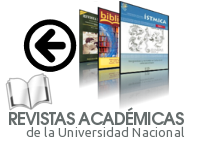Submissions
Submission Preparation Checklist
All submissions must meet the following requirements.
- The petition has not been previously published, nor has it been submitted simultaneously to another journal (or an explanation has been provided in comments to the editor).
- The submitted manuscript is in Microsoft Word format.
- Web addresses and DOIs have been added for references where possible.
- The text is double-spaced; the font size is 12 point; italics are used instead of underlining (except for URL addresses); and all illustrations, figures and tables are in the right place within the text and not at the end of the text.
- The text complies with the bibliographical and stylistic requirements indicated in the Guidelines for authors, which can be found in About the Journal.
- If you are submitting to a peer-reviewed section of the journal, you need to make sure that the instructions on Assuring a blind peer review) have been followed.
Copyright Notice
Licensing of articles
All articles will be published under a license:

Licencia Creative Commons Atribución-NoComercial-SinDerivadas 3.0 Costa Rica.
Access to this journal is free of charge, only the article and the journal must be cited in full.
Intellectual property rights belong to the author. Once the article has been accepted for publication, the author assigns the reproduction rights to the Journal.
Ciencias Veterinarias Journal authorizes the printing of articles and photocopies for personal use. Also, the use for educational purposes is encouraged. Especially: institutions may create links to specific articles found in the journal's server in order to make up course packages, seminars or as instructional material.
The author may place a copy of the final version on his or her server, although it is recommended that a link be maintained to the journal's server where the original article is located.
Intellectual property violations are the responsibility of the author. The company or institution that provides access to the contents, either because it acts only as a transmitter of information (for example, Internet access providers) or because it offers public server services, is not responsible.
Privacy Statement
The names and e-mail addresses entered in this journal will be used exclusively for the purposes stated by this journal and will not be made available to any other purpose or person.






